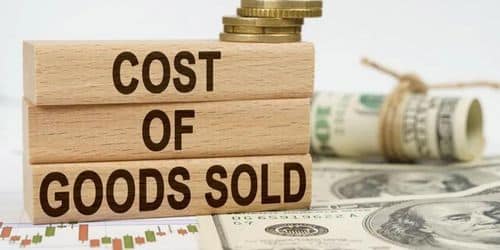To be profitable, businesses must account for all of the resources and time spent on preparing products for sale. A company’s profit and loss statement usually includes a line item for the cost of goods sold. It is also essential for tax returns; after all, who wouldn’t desire a fair tax deduction? You can use the knowledge of how to compute COGS to set reasonable prices for your products, spot expansion prospects, and handle your tax obligations. Read on to learn about the cost of goods sold example, its formula, how it is calculated, and whether it is an expense.
What Is COGS in Simple Words?
The phrase “cost of goods sold” (COGS) refers to the costs a company has to pay to make the products it sells. This total takes into account all of the materials and time that spent creating the product.
What Is Another Name for Cost of Goods Sold?
COGS stands for “cost of goods sold,” which is another name for “cost of sales.” Also, “cost of sales” is another way of saying “cost of goods sold.” A wholesaler is a retailer that purchases goods from manufacturers and then resells them to individual customers. A retailer purchases goods from their respective makers and then resells those goods to wholesalers. In other words, the total amount spent on buying and preparing goods for sale is the cost of goods sold.
What Are Components of COGS?
Cost of production, inventory cost of sales, labor, and raw materials are major components of the cost of goods sold. However, marketing and distribution are examples of indirect costs that are left out of the cost of goods sold calculations.
Formula Cost of Goods Sold
The formula for the cost of goods sold include: Cost of Goods Sold = Opening Inventory + Purchasing Overhead minus Closing Inventory
On the income statement, sales of inventory are written down in the COGS account. The goods that are still in stock at the beginning of the year are the ones that didn’t sell the year before. A manufacturer or retailer’s stock goes up by the total of everything they make and buy after that. At the end of the year, the initial stock plus new purchases are subtracted from the number of products that did not sell. The annual cost of products sold is the sum total of all the numbers in the computation.
The balance sheet has an account for current assets. This ledger has a section for “inventory.” The balance sheet only shows the financial state of a business at the end of the accounting period. This means that the value of the inventory that is counted as a current asset at the end of the period is the same as the value of the inventory at the end of the period.
Here’s another formula calculating the cost of goods sold, where the prices of production and purchase are changed to account for changes in stock. For example, if 400 items are made or bought but the stock only goes up by 50, only 350 of those items will count toward the cost of goods sold. So,if there is a reduction of 50 items in stock, then the cost of goods sold is $450.
Cost of Goods Sold Example
Below is the cost of goods sold example:
Example 1
The first inventory for the budget year that ended in 2021 was written down as $4,000. Also, an extra $2,000 worth of inventory was bought during the fiscal year, bringing the total to $1,500. This was all written down at the end of the fiscal year in 2022. According to the COG formula, the following will constitute the cost of goods sold:
COG=$4,000 + $2,000 – $1,000 = $5,000.
Example 2
An e-commerce website sells beautiful bracelets. In order for a business to calculate its cost of goods sold using this example, it must first determine the value of its inventory at the start of the current fiscal year, which is the same as the value of its inventory at the conclusion of the preceding fiscal year. The initial value is then elevated by the amount that must be spent on making the jewelry during the year. These costs could include the cost of the raw materials, the cost of labor, and the cost of shipping jewelry to customers.
At last, the value of the business’s inventory is subtracted from the business’s initial value and costs. Because of this, the company’s e-commerce site will be able to figure out the exact cost of the goods it sells.
Example 3
Let’s assume you wish to calculate your 2022 first-quarter selling costs. Your inventory record starts on January 1 and ends in March. Hence, if your business began with $10,000 in inventory, spent $6,000 on purchases, and ended with $3,000 in inventory, your total cost of goods sold (COGS) for that quarter in this example will be $3,000.:
The cost of goods sold is calculated by comparing the inventory at the start of the period to the total purchases made during the period and subtracting the inventory at the end of the period.
COG= 12,000+ $6,000 -$3,000 = $15,000
So, the total cost of goods (COG) that were sold during that quarter was $15,000.
Are Salaries Included in COGS?
COGS does not include salaries or any other general or administrative costs. However, certain forms of labor costs may make up COGS as long as they can be similar in structure to specific sales. For instance, a business that depends on freelancers to bring in money can give each freelancer a commission based on how much the customer pays in the end. Since this type of labor cost is directly related to how much money is being made, the contractors’ commissions may make up the company’s (COGS) in this case.
How Is Cost of Goods Sold Calculated?
Understanding how the cost of goods sold is being calculated is essential if you run a retail operation. This total takes into account everything that needs to be done to make a sale. Depending on the number of items and the intricacy of the production process, determining the COGS for the items you create or sell can be a challenging task. Below is how the cost of goods sold is calculated:
#1. Find Out What It Will Really Cost You
The cost of goods sold method of accounting lets you deduct any costs related to selling products, whether those products were made in-house or bought to sell. Specify all expenses, such as labor, materials, and other overhead.
COGS takes into account the following categories of expenditures:
- “Direct costs” which are the expenses resulting directly from making or buying the product.
- Indirect costs which include things like rent, utilities, equipment, and salaries that aren’t directly related to making or selling something.
#2. Calculate the Cost of the Facilities
Predicting the total amount spent on facilities (including the price of buildings and other sites) is the most challenging aspect of any project. Here’s when the help of a qualified tax expert is invaluable. For the given accounting period, you must allocate a specific percentage of your facility costs (rent/mortgage payment, electricity, and so on) to each product annually.
#3. Compute the Initial Stock
To determine how the cost of goods sold is being calculated, your raw materials, finished goods, and supplies will all be part of your stock. Inventories may need physical counting or a running tally throughout the year.
In other words, your stock at the start of the year must be identical to your stock at the end of the previous year. In the event that the two figures do not tally, you must provide an explanation for the discrepancy on your tax return.
#4. Complete Stock Acquisitions
The majority of companies increase their stock levels annually. Each item added to stock should have its manufacturing or shipping cost recorded. If you have recently made a large purchase, be sure to save any receipts and other relevant information. Hence, you should consult a tax expert to ascertain the value of stocking up on the things you produce.
#5. Calculate the Final Stock
Taking a physical inventory of products or making an estimate are the usual methods for calculating ending inventory costs. Stock that is split or no longer wanted could be sold to lower closing inventory costs. So, don’t forget to include an estimated value for any damaged stock. Inventory that has no value must have proof that it has been thrown away. In the case of out-of-date stock, you’ll additionally need to prove that its value has dropped significantly.
Is Cost of Goods Sold an Expense?
Yes, a company’s main expense is the COGS. The total amount of money spent on making the product that got sold. According to this theory, costs should be proportional to revenues. So, once sales revenues are recognized, the principal offsetting item, the cost of products sold, must also be recorded at the moment of sale. Thus, the cost of products sold is an expense. It follows the sales section of the financial statements and occurs before the SG&A section.
Furthermore, the cost of products sold is potentially null if there are no transactions involving commodities or services. The inventory asset account, a balance sheet current asset, records goods and service costs. The cost of goods sold account may include expenses that are irrelevant to sales. These costs are not added to the price of the goods or services. Also, there may be output costs (like rent for a building) even when no work is being done, such as when a union strike is going on. The cost of products sold can occur in certain situations even if there are no actual sales.
What Is COGS Formula Percentage?
One of the most critical indicators of profitability in the food service and redemption gaming industries is the (COGS) percentage. It is impossible to know which products are profitable and whether or not you are making a profit unless you keep track of your cost of goods sold (COGS) regularly. Constantly checking the cost of goods sold (COGS) % will help you spot issues before they snowball into a major loss of revenue. Just dividing COGS by revenue yields the COGS percentage. For instance, the COGS proportion for liquor would be 25% if the COGS for liquor that week was $2,000 and sales of liquor that week were $5,000.
What Is the Difference Between COGS and Expenses?
Comparing the cost of goods sold (COGS) to operational expenses (OpEx) may produce some surprising results. However, there is a difference between COGS and expenses. If a product is profitable, the COGS shows if price increases or supplier cost reductions are necessary. In contrast, operational expenditures emphasize business management and “long-term” investments (such as research and development, which may yield advantages). In other words, accrual accounting’s COGS/OpEx split helps business owners set prices and investors understand the company’s cost structure.
Is COGS Debited or Credited?
Yes, the ( COGS) is often recorded in the books as either a debit or credit. Hence, for every transaction on the left side of the balance sheet, both a credit and a debit must be written down. This system has two ways to keep track of money, so the financial records and reports it makes can be credible.
Final Thoughts
Since COGS is removed from sales, it has an immediate effect on a company’s bottom line. Businesses need to control the cost of goods sold if they want to maximize their earnings. Also, a company’s ability to negotiate better supplier prices or improve manufacturing efficiency might affect its profitability.
References
- Financialfalconet.com
- Slcbookkeeping.com
- Wallstreetprep.com
- Investopedia.com
- freshbooks.com
We Also Recommend
- HOW TO CALCULATE COST OF GOODS SOLD: Definition & Formula
- Profit and Loss Statement Explained!!! How to Read & Create P&L Statement
- Gross Profit Margin: Formula & How to Calculate the Gross Profit margin
- Gross Profit Explained!!! Formula & How to Calculate with Examples
- BEST APPS FOR INVENTORY MANAGEMENT IN 2023
- COST OF GOODS MANUFACTURED: Formula, Schedule, & How to Calculate Guide
- TIME AND HALF PAY: What Is It, How It Works & Calculation






